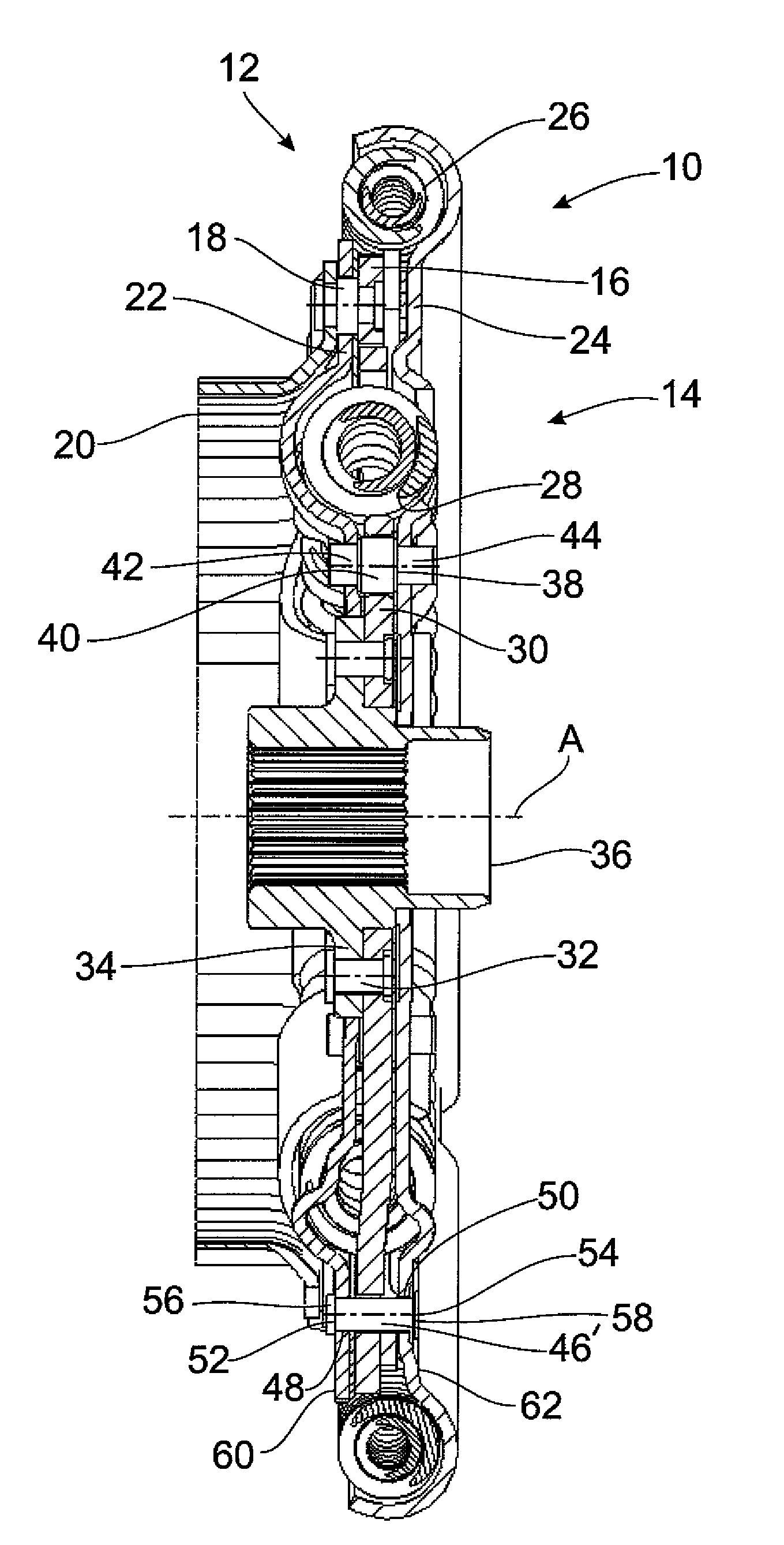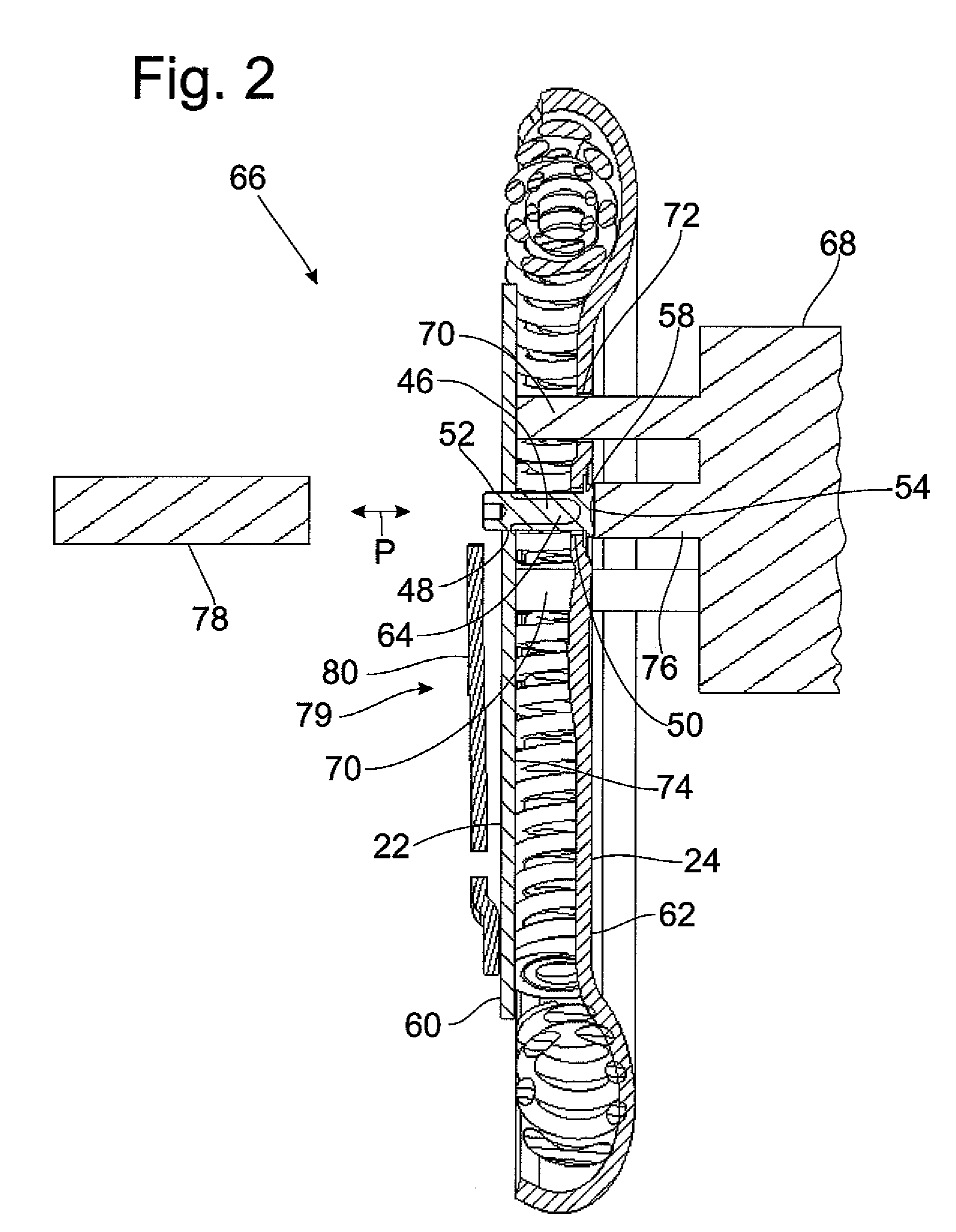Method for riveting two structural component parts, in particular cover plate elements of a torsional vibration damper arrangement, at a distance from one another
- Summary
- Abstract
- Description
- Claims
- Application Information
AI Technical Summary
Benefits of technology
Problems solved by technology
Method used
Image
Examples
Embodiment Construction
[0050]With reference to different examples, the following description will illustrate how two structural component parts which are made of sheet metal material can be connected to one another by one spacer rivet element, but generally by a plurality of spacer rivet elements, in such a way that a specified maximum distance between the two structural component parts to be connected to one another is ensured by rivet elements of this kind. The two structural component parts to be connected to one another in the example are the cover plate elements, or cover plates, of a torsional vibration damper arrangement such as that which was described by way of example with reference to FIG. 1. Of course, other structural component parts in other fields of application can also be connected to one another in the manner described in the following.
[0051]FIG. 2 shows the two cover plate elements 22, 24 which are arranged opposite one another and which also are, or can be, fixedly connected to one ano...
PUM
| Property | Measurement | Unit |
|---|---|---|
| Force | aaaaa | aaaaa |
| Area | aaaaa | aaaaa |
| Distance | aaaaa | aaaaa |
Abstract
Description
Claims
Application Information
 Login to View More
Login to View More - R&D
- Intellectual Property
- Life Sciences
- Materials
- Tech Scout
- Unparalleled Data Quality
- Higher Quality Content
- 60% Fewer Hallucinations
Browse by: Latest US Patents, China's latest patents, Technical Efficacy Thesaurus, Application Domain, Technology Topic, Popular Technical Reports.
© 2025 PatSnap. All rights reserved.Legal|Privacy policy|Modern Slavery Act Transparency Statement|Sitemap|About US| Contact US: help@patsnap.com



